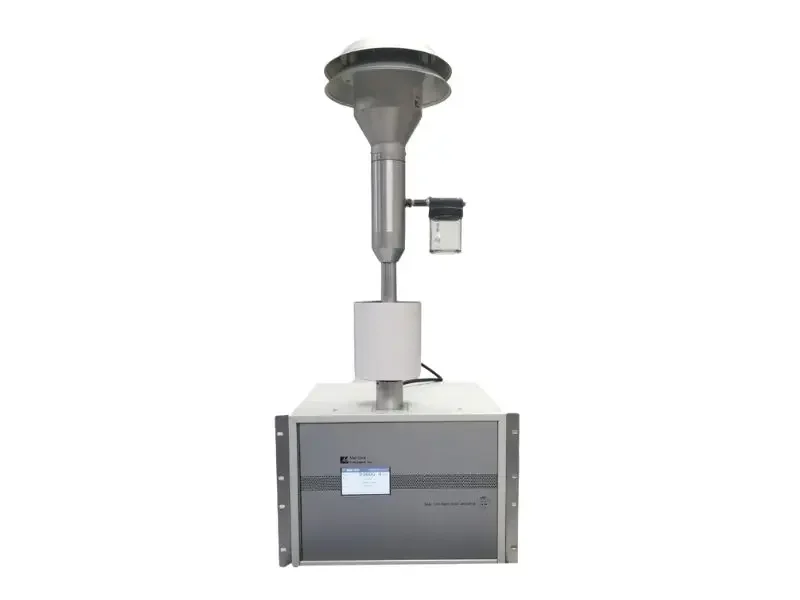The Met One Instruments Continuous Particulate Monitor (Model BAM-1020) automatically measures and records airborne particulate concentration levels using the industry-proven principle of beta ray attenuation.
Thousands of BAM-1020 units are currently deployed worldwide, making the unit one of the most successful air monitoring platforms in the world.
Excellent value for money. The BAM-1020 is extremely cost-effective, to buy, operate and run. The sample tape lasts for 60 days providing hourly mass measurements so local site operation is only required once every 2 months.
Compact, rugged and reliable. The BAM-1020 has been in production for over 15 years and has earned an excellent reputation internationally for its reliability, accuracy and ease of use.
EU/UK Approved equivalent method for use on all UK monitoring networks. The BAM-1020 was one of only a select few instruments tested to comply with the CEN 1234-1 reference method during the 2005 BV inter-comparison.
Beta attenuation mass monitors are indifferent to the chemical composition of the particulate matter whose mass density is being measured. As the name implies, beta attenuation mass monitors measure only mass. No assumptions concerning the physical or optical properties of the sampled particulate matter are necessary. Its sensitivity to diesel exhaust is no different than it is to Arizona road dust or to salt spray. This translates into reliable mass measurement any time at any place.
How it works
At the beginning of each sample hour, a small 14C (carbon-14) source emits a constant source of high-energy electrons (known as beta rays) through a spot of clean filter tape. These beta rays are detected and counted by a sensitive scintillation detector to determine a zero reading. The BAM 1020 then advances this spot of tape to the sample nozzle, where a vacuum pump pulls a measured and controlled amount of outside air through the filter tape, loading it with ambient particulate matter. At the end of the sample hour, this dust spot is placed back between the beta source and the detector, thereby causing an attenuation of the beta ray signal which is used to determine the mass density of the particulate matter on the filter tape. The mass density and sampled volume are used to calculate the volumetric concentration of particulate matter in ambient air.
Servicing
Datasheet
Continuous Particulate Monitor (Model BAM-1020)
Specifications
- Long term unattended remote operation of up to 60 days between site visits
- Full remote Desktop Control using supplied COMET software
- Expanded optional meteorological sensor interface using Met One Instruments Multi-Measurement 7500 Protocol
- Very low operating costs
- Span check membrane standard
- Fast and easy field audits
- Bench top or rack mount operation in mobile or stationary shelters
- Rugged anodized aluminium, stainless steel, and baked enamel construction
- Highly accurate, reliable, and mechanically simple flow system
- Hourly filter advances minimise effects of semi-volatile compounds
- Advanced Smart Heater technology precisely controls sample relative humidity
- Integrated data logger allows the connection of up to two multi-parameter meteorological sensors
- Data retrieval through RS-232 or RS-485 serial ports using direct PC connections or digital data collection systems






